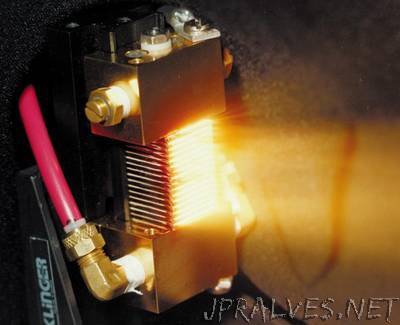
“A new 3D printing/additive manufacturing process using energy efficient diode lasers is set to change the way parts are produced, according to researchers at the University of Sheffield. Laser melting systems are increasingly being used in high-value sectors like aerospace and automotive to manufacture metallic and plastics parts in layers from powder. However, this process is limited as it relies on a mirror to deflect a single laser, curbing the speed of the system. The new process, called Diode Area Melting (DAM), can overcome this by melting large areas in parallel using an array of individual laser diodes. These laser beams can be switched on or off as they move across the powder bed making it faster but also more energy efficient. Dr Kristian Groom, from the Department of Electronic and Electrical Engineering, said: “Our research challenges the long held belief in the industry that low power diode modules cannot achieve sufficient melting due to their low power and poor beam quality.”
